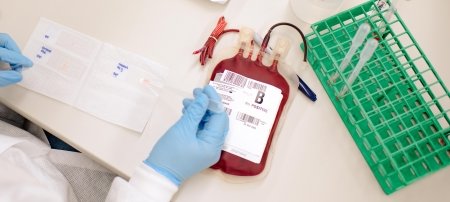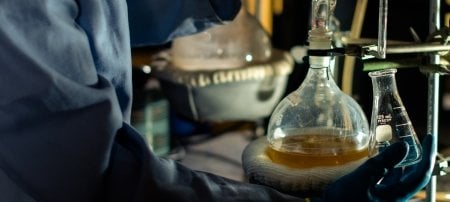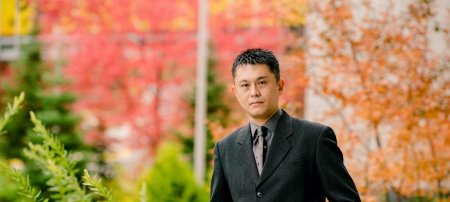Ode to a Fibrin Polymer--How a Student's Verse Made the Clinical Chemistry Journal
Some things are more fun to learn than others, and the coagulation cascade has traditionally
been ranked among the less fun. Sure, it's important--without it we'd all bleed to
death--but it is devilishly complex, with a vocabulary only a clinical lab scientist
could love.
Thus, Karyn Fay doesn't test her students on it, for fear it will be quickly memorized
and even more quickly forgotten. "I have them repeat it to me," says the biological
sciences professor of practice. "If they can put it down somehow, they learn it a
lot better."
Most students develop a poster or a PowerPoint presentation for their mini-reports
on how blood clots. Mark Vande Haar opted for poetry, but not just any kind of poetry.
"He decided to do a limerick," says Fay.
But not just any kind of limerick. Vande Haar penned a 12-verse epic in which he manages
to rhyme words like "phospholipids," "hemorrhage" and "zymogen."
He explains. "The coagulation cascade has to do with hematology. One part of it looks
at the blood cells, another looks at coagulation, the proteins in the blood that cause
clotting. The proteins interact in special ways, and that's what inspired these limericks."
To wit:
If you're dying from a traumatic hemorrhage,
your body can make its own bandage.
Factor III is released,
and calcium completes
the VIIa and TF assemblage.
Also:
Factor VIII and von Willebrand's factor stick,
and with platelets they help "make blood thick."
This starts the plug
and it makes me quite smug
to know I won't die from this prick.
There's plenty more where that came from, and you'll be happy to know that you can
read it right now in the journal of the American Association for Clinical Chemistry.
"It was so innovative and so creative that we decided to send it to The Clinical Chemistry
Journal," Fay said. "It has a section on using the other side of your brain called
'Unveiling the Right Side.' We submitted it, and they emailed me in a week and said
they wanted to publish it."
Publication in a peer-reviewed journal is an illustrious cap to an undergraduate career,
particularly since Vande Haar took a road less traveled. After six years at Michigan
Tech, he is now on the dean's list and on the verge of graduating. "I finally found
what I love to do," he says of his major in clinical laboratory science.
Initially, he had studied computer science, in part because his physician father bent
over backward to avoid influencing his son's career choice. "But when I tried biology,
I loved it, and on the way to premed, I found medical technology. I'd like to be a
pathologist."
Vande Haar is completing an internship at the Mayo Clinic and hopes to get into med
school. But if he doesn't, he still has plenty of options. "The CLS degree gives you
everything you need to get into med school, plus there are so many other avenues,"
he says. "And Alice [Soldan, senior lecturer] and Karyn are great instructors. I don't
think there are two better instructors on the planet."
For her part, Fay calls Vande Haar's coagulation cascade descriptions "phenomenal,"
both for their accuracy and their inventiveness. "He said he did it over a weekend,
that it just came to him," she says in amazement.
The limericks are not Vande Haar's first effort. "My uncle and I used to write poems
back and forth during the holiday season," he says. "When Karyn said we could do the
coagulation cascade in any format, I thought I'd write a poem. My uncle was recently
diagnosed with prostate cancer and hasn't been strong enough to write poetry, so I
thought I'd try to cheer him up."
Plus, Vande Haar says, he just loves to write. "You have to love to write if you are
a physician."
Michigan Technological University is a public research university founded in 1885 in Houghton, Michigan, and is home to more than 7,000 students from 55 countries around the world. Consistently ranked among the best universities in the country for return on investment, Michigan’s flagship technological university offers more than 120 undergraduate and graduate degree programs in science and technology, engineering, computing, forestry, business and economics, health professions, humanities, mathematics, social sciences, and the arts. The rural campus is situated just miles from Lake Superior in Michigan's Upper Peninsula, offering year-round opportunities for outdoor adventure.




Comments